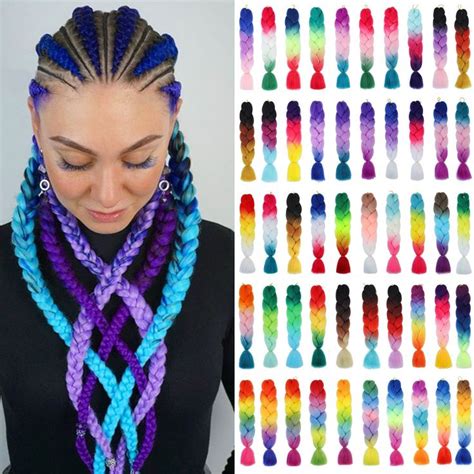Braiding hair extensions has become increasingly popular in recent years. This method offers a variety of benefits that can enhance the look and feel of your hair. Here are 5 reasons why you should consider braiding your hair extensions:

- Protection: Braiding hair extensions can help protect your natural hair from damage. The braids create a barrier between your hair and the elements, reducing the risk of breakage, split ends, and dryness.
- Length and Volume: Braiding hair extensions can add instant length and volume to your hair. This is a great option for those who want to achieve a fuller, more voluminous look without having to wait for their natural hair to grow.
- Versatility: Braided hair extensions are incredibly versatile and can be styled in a variety of ways. You can wear them in a ponytail, a bun, or even a braid. You can also add beads, ribbons, or other accessories to create a unique look.
- Low Maintenance: Braided hair extensions are relatively low maintenance. Once they are installed, you can typically go for weeks without having to worry about them. This makes them a great option for busy people who don’t have a lot of time to spend on their hair.
- Cost-Effective: Braided hair extensions are a cost-effective way to achieve a new look. They are typically much less expensive than other methods of hair extensions, such as clip-ins or tape-ins.
There are a variety of different braids that can be used for hair extensions. Some of the most popular types of braids include:
- Cornrows: Cornrows are a type of tight, flat braid that is typically worn close to the scalp. They are a great option for adding length and volume to your hair.
- French Braids: French braids are a type of three-strand braid that is braided from the top of the head down to the nape of the neck. They are a versatile braid that can be worn in a variety of styles.
- Dutch Braids: Dutch braids are similar to French braids, but they are braided underhand instead of overhand. This creates a raised braid that is more voluminous than a French braid.
- Box Braids: Box braids are a type of square-shaped braid that is typically worn by African Americans. They are a great option for adding length and volume to your hair, and they can also be used to create a variety of different styles.
- Dreadlocks: Dreadlocks are a type of matted braid that is typically worn by Rastafarians. They are a permanent type of braid that can take months or even years to form.
Braiding hair extensions is a relatively simple process that can be done at home. Here are the steps on how to braid hair extensions:
- Gather your materials. You will need hair extensions, a braiding needle, thread, and a pair of scissors.
- Prepare the hair extensions. Cut the hair extensions to the desired length.
- Thread the braiding needle. Thread the braiding needle with the thread.
- Start braiding. Start braiding the hair extensions by taking a small section of hair from the top of your head and dividing it into three strands.
- Cross the strands. Cross the left strand over the middle strand, and then cross the right strand over the left strand.
- Tighten the braid. Pull the strands tight to create a secure braid.
- Continue braiding. Continue braiding the hair extensions until you reach the end of the hair.
- Secure the braid. Tie off the end of the braid with the thread.
- Style the braid. You can style the braid in a variety of ways. You can wear it in a ponytail, a bun, or even a braid. You can also add beads, ribbons, or other accessories to create a unique look.
Here are a few tips for braiding hair extensions:
- Use the right size of hair extensions. The hair extensions should be the same size as your natural hair. If the hair extensions are too small, they will be difficult to braid. If the hair extensions are too large, they will be too heavy and will weigh down your hair.
- Use a sharp braiding needle. A sharp braiding needle will make it easier to braid the hair extensions.
- Don’t braid your hair too tightly. If you braid your hair too tightly, it can damage your natural hair.
- Use a moisturizer. Moisturizing your hair will help to keep it healthy and prevent it from becoming dry and brittle.
- Be patient. Braiding hair extensions can take a while. Don’t get discouraged if it takes you a few tries to get the hang of it.
Braiding hair extensions is a great way to add length, volume, and style to your hair. With a little practice, you can learn how to braid hair extensions at home. Just follow the steps above and you will be able to achieve a beautiful, braided look in no time.
